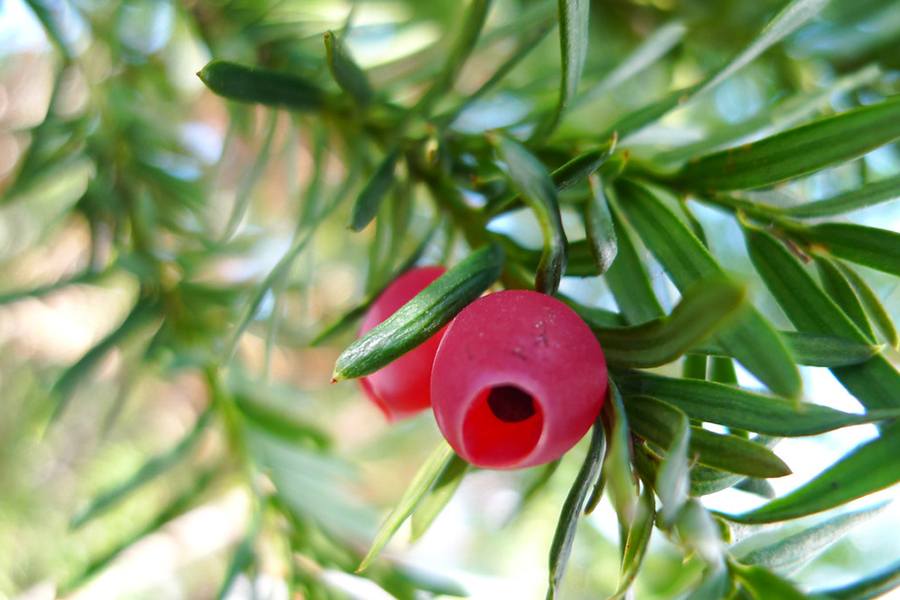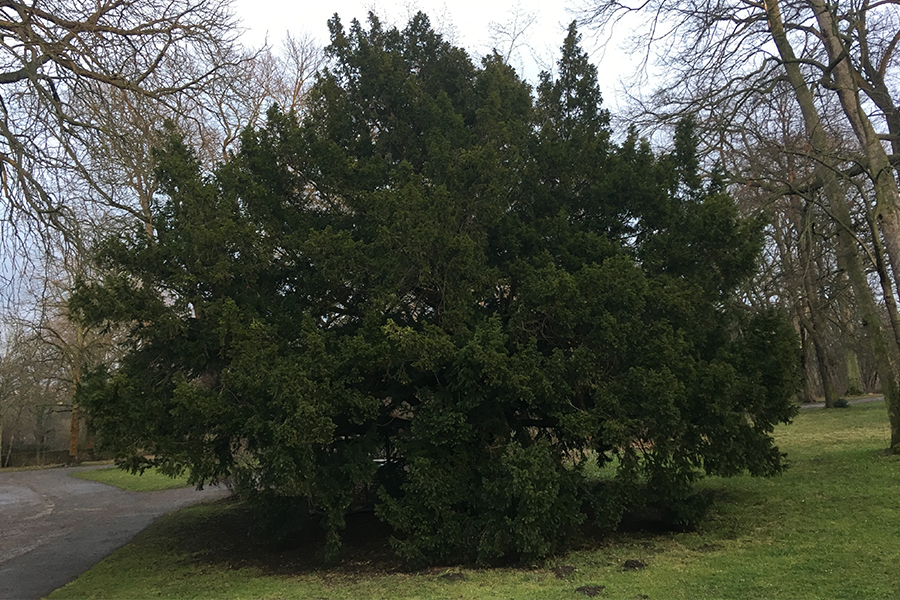Taxus baccata
The European yew can live thousands of years, yet is sometimes called “the tree of death.” This is because of the highly poisonous compounds contained in most parts of the plant.
Location
Today, we have a yew tree in the North of the arboretum. It can be most easily spotted from the Larch Lane or Stone Wall Cutoff trails.


History at Hadwen
Hadwen cultivated European yew in the arboretum at least as early as 1882. In 1900, he wrote that he greatly appreciated coniferous trees “for their symmetry of form and varying shades of green.” Moving into the 1960s, there are limited records showing the prevalence of yew until 2020.
Keep Learning
Detailed Species Information
European yew is an evergreen species in the family Taxaceae native to much of Europe and parts of North Africa and southwestern Asia. The trees are small, typically growing 35–65 feet (10–20 meters) tall and 6.5 feet (2 meters) in diameter. The yew is a long-lived species, typically living 400 to 600 years and in some cases reaching thousands of years. The yew is characterized by brown, flaky, scaly bark and flat, dark green needles. The seeds of the yew are contained in sticky, soft, red berry-like structures called aril. It should be noted that most parts of the tree, including the seeds and leaves, contain highly poisonous toxic compounds. Physical contact can lead to irritation and consumption can result in death. Despite this, the seeds are eaten by some species of finches and tits. The berry-like aril is not poisonous and is said to have a sweet taste.
European yew prefers rocky slopes and well-drained soils of all types. Given the correct conditions, the yew is able to withstand a variety of stressful conditions such as temporary floods and droughts. As an understory tree, it is tolerant of low light conditions but can also thrive in full sun. The wood of the yew is remarkably strong and also flexible. In the Middle Ages, the wood of the yew was used to construct musical instruments, longbows, and fine woodworking. Because of the high demand for yew wood and the yew’s slow growth rates, the tree nearly went extinct in Europe during this time. Today, the yew is widely used in landscaping as an ornamental tree due to its appearance and tolerance to harsh conditions. Further, its slow growth means it requires infrequent pruning.
